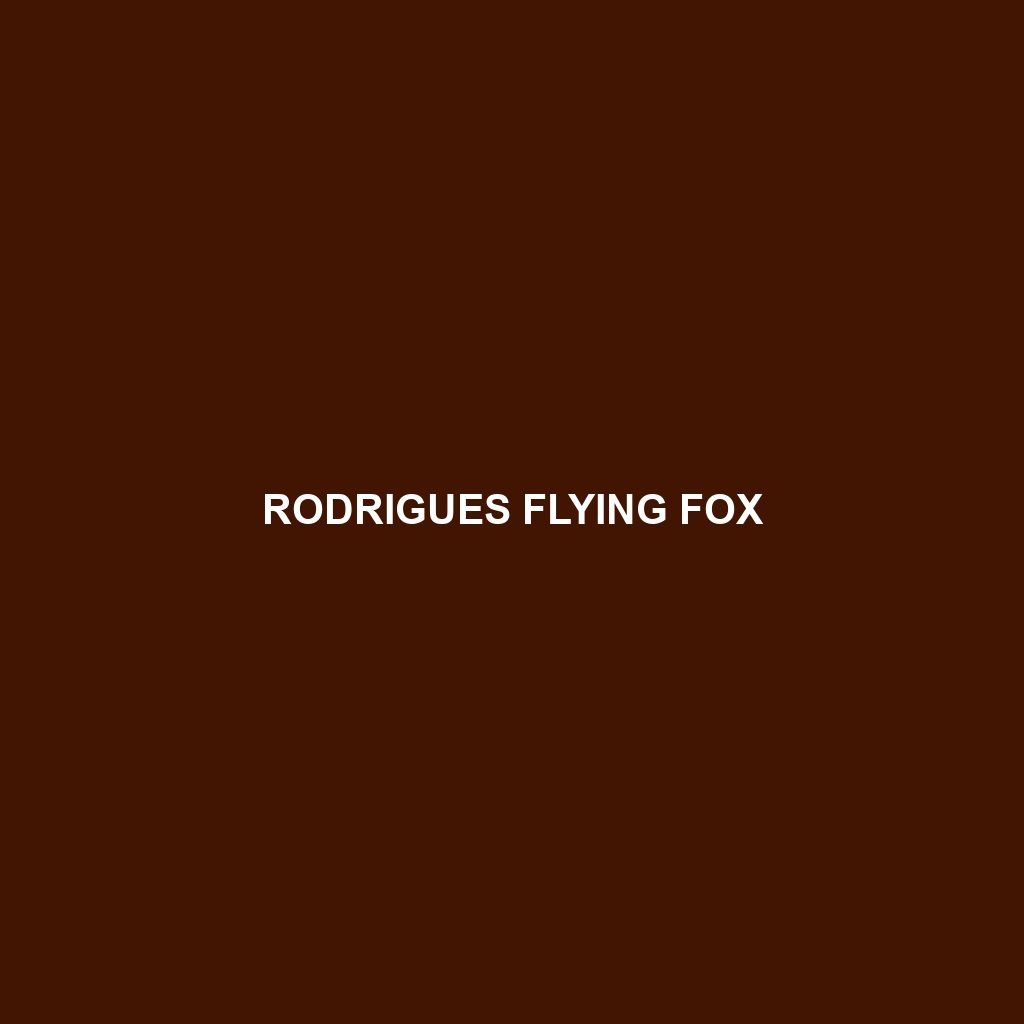Rodrigues Flying Fox Description
Common Name: Rodrigues Flying Fox
Scientific Name: Pteropus rodricensis
Habitat: The Rodrigues Flying Fox is primarily found on Rodrigues Island, which is located in the Indian Ocean, east of Mauritius. This species thrives in tropical forests, often in areas with fruit-bearing trees. Its habitat is characterized by lush vegetation and abundant food sources, making it a vital part of the island ecosystem.
Physical Characteristics: The Rodrigues Flying Fox is a large bat species, with a wingspan that can reach up to 1.5 meters (approximately 5 feet). Adults usually weigh between 400 to 600 grams. They have dark brown to black fur, with a lighter-colored face and distinctive golden fur around their necks. Their large, pointed ears and fox-like appearance contribute to their common name, making them easily recognizable among other bat species.
Behavior: Rodrigues Flying Foxes are primarily nocturnal, roosting in trees during the day and becoming active at dusk. They exhibit social behavior, often forming large groups when roosting. These bats are known for their agile flying abilities, which they use to navigate through dense forest canopies in search of food. Additionally, they are crucial for pollination and seed dispersal in their habitat, enriching the biodiversity of their environment.
Diet: The diet of the Rodrigues Flying Fox consists mainly of fruits, nectar, and flowers. They are particularly fond of the native guava and tamarind trees found on Rodrigues Island. Their feeding habits make them essential for the growth and propagation of these plant species, as they assist in pollination and seed dispersal through their foraging activities.
Reproduction: Rodrigues Flying Foxes typically breed once a year, with the breeding season occurring from September to November. After a gestation period of approximately 5 months, females usually give birth to a single pup. The young are dependent on their mothers for several months, learning essential survival skills during this period.
Conservation Status: The Rodrigues Flying Fox is currently classified as Critically Endangered on the IUCN Red List due to habitat loss and hunting pressures. Conservation efforts are critical to protect this unique species from extinction, focusing on habitat restoration and public awareness initiatives.
Interesting Facts: One fascinating fact about the Rodrigues Flying Fox is that it can travel distances of up to 50 kilometers in search of food, making it a remarkable long-distance forager. Furthermore, these bats play a crucial role in the ecosystem by aiding in the germination of seeds from the fruits they consume.
Role in Ecosystem: The Rodrigues Flying Fox plays a vital role in its ecosystem as a pollinator and seed disperser. By feeding on nectar and fruits, they help to maintain plant diversity and support the health of the forest habitats. Their interactions with various plant species enhance ecological stability, making their conservation essential not just for their survival, but for the overall health of their environment.
